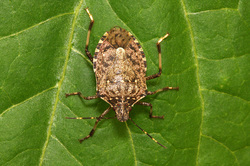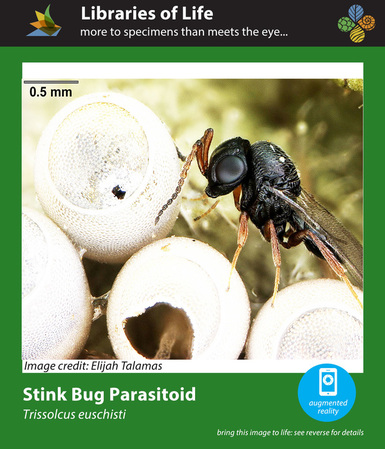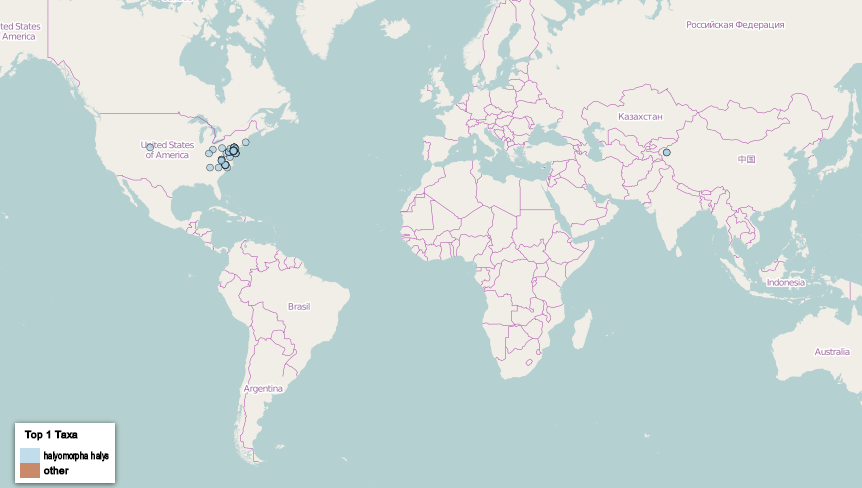Stink Bug parasitoid: Did you know?
|
CLICK TO DOWNLOAD CARD
Stink bug parasitoid Source: Entomological Society of America
Note: Recent investigation has treated Trissolcus halyomorphae as a junior synonym of Trissolcus japonicus. |

Many stink bug species play important roles in their native environments, such as consuming pests. However, the brown marmorated stink bug (Halyomorpha halys) is itself a major agricultural pest, attacking fields of fruits and vegetables and causing major economic damage. The brown marmorated stink bug was brought to the United States from Asia and is now considered an invasive species. As a "true bug," it uses its proboscis to suck juices from its host plant. The stink bug gets its name from stink glands located on the underside of its thorax. The strong scent is used to deter predators like birds and lizards.
A particularly interesting interaction exists between crops, stink bugs, and parasitoid wasps. Wasps in the Trissolcus genus will lay their eggs inside stink bug eggs using their ovipositor (the precursor to stingers in other species). As each wasp larva grows inside each egg, the egg dies. Eventually an adult wasp emerges and will continue the same parasitic cycle. This interaction between plant, herbivore, and predator is called a tritrophic interaction. Scientists in the United States are currently researching species in the genus Trissolcus, which is generally found in East Asia alongside stink bug populations, as a possible means for pest control. To better study complex, tritrophic interactions such as this one, the Tri-trophic Thematic Collections Network aims to integrate museum data on plant taxa, herbivorous insects, and related parasitoids. This unification of over 7 million records will provide a resource by which scientists can answer important ecological, agricultural, biogeographical, and other types of questions. Credits:
Project's Library of Life Leads: Katja Seltmann (American Museum of Natural History), Christopher Marshall (Oregon State University) 3-D Imaging: K. Harrison Holmes and Anne Basham Card Image: Elijah Talamas Page Image: Halyomorpha halys Image Credit Yerpo (Wikimedia) Video: Entomological Society of America More information: Tri-trophic Thematic Collections Network http://tcn.amnh.org/ Digitized Halyomorpha halys specimens in biological collections.
Click the map to explore the iDigBio database. |




